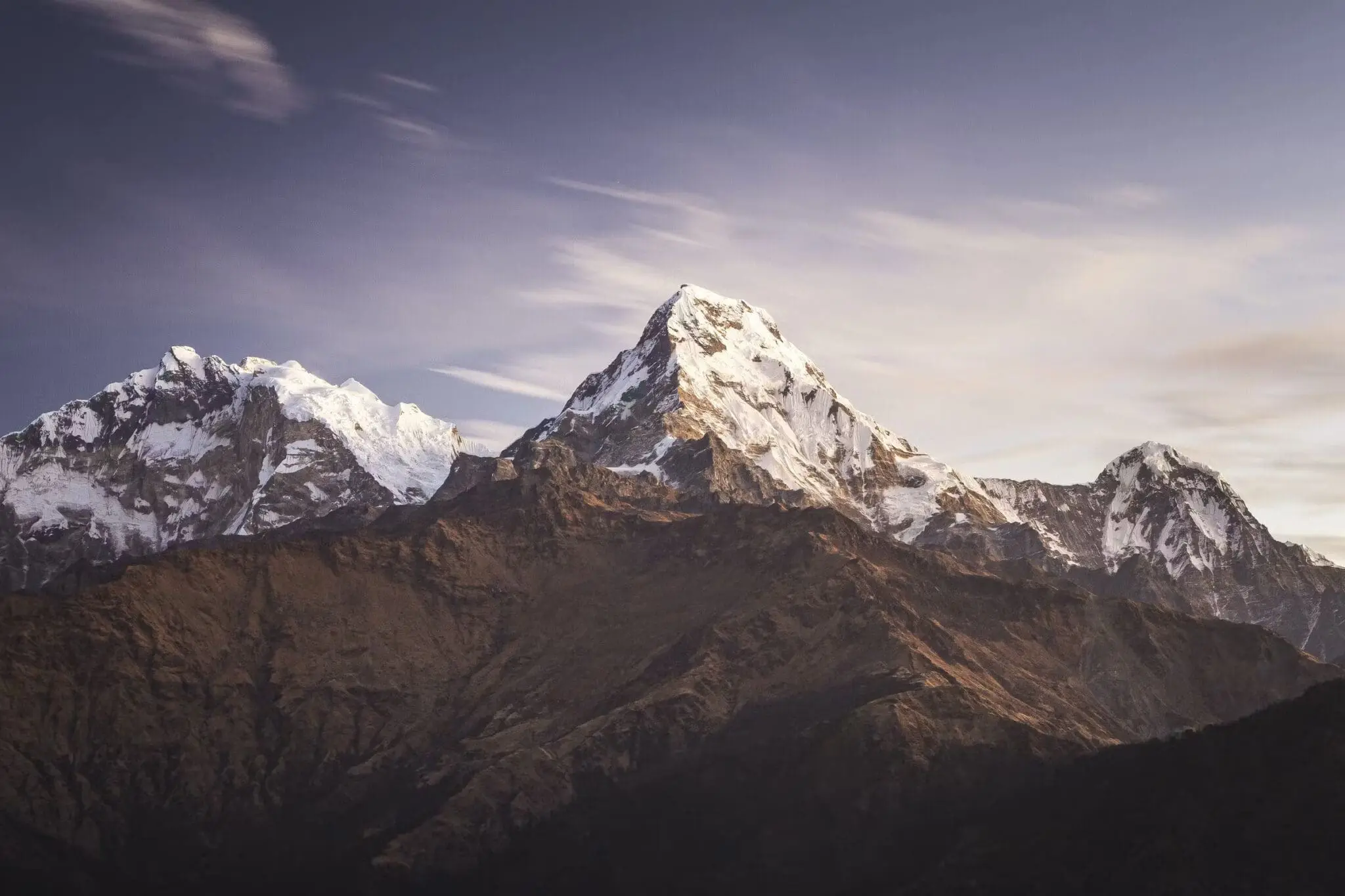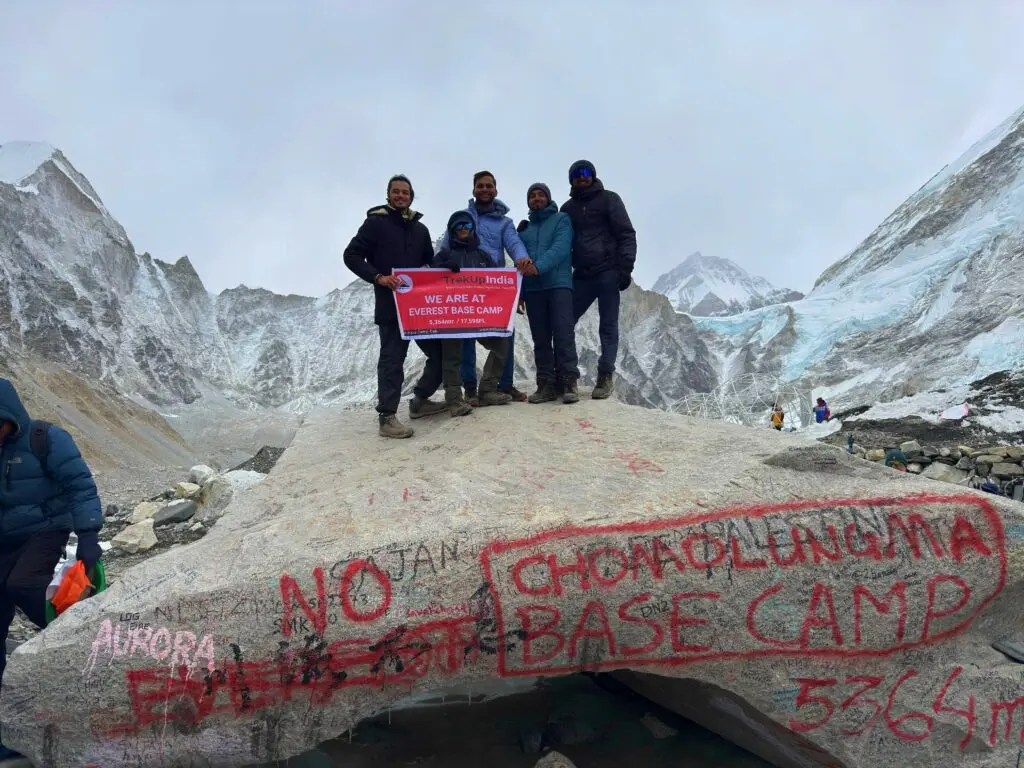Mountaineering has long been a cornerstone of Nepalese tourism sector. Situated in India's subcontinent, Nepal hosts thousands of tourists from across the world every year for decades - hosting sixteen of Eight-Thousand Mountains located here alone! To reach their summit will require years of mountaineering expertise. However, those less experienced can still witness Nepal's majestic mountains by participating in base camp treks - these vary considerably but two of the more well-known ones include Annapurna Base Camp Trek (ABC) Trek and Everest Base Camp Trek (EBC). Annapurna is widely considered one of the world's toughest mountains to climb, yet the trek to its base camp (ABC) isn't difficult at all.

ABC sits at 13,550 feet and forms part of Annapurna Sanctuary within Annapurna Range of Himalayas, home to people of various religions like Buddhism and Hinduism as well as farming communities consisting of Brahmins and Chhetris in its lower areas. Trekkers begin at Nayapul, approximately 40km northeast from Pokhara; all year-round access. Mount Everest, named in honour of Sir George Everest, is the highest peak on earth and visited annually by thousands of tourists from all around the globe. Becoming one of the select few climbers who reach the summit is no small feat; but just trekking down to its Base Camp is considered an accomplishment in its own right. Sagarmatha National Park lies to the northeast of Nepal. Here lies Everest Base Camp at 17,598 feet elevation. Khumbu (Everest) Region in northeast Nepal is known for its outstanding Sherpa people, renowned for their strength and endurance. Trekking starts from Lukla in north-eastern Nepal - accessible via an exciting forty-minute trip from Kathmandu.

ABC or EBC - Which Trek is Right for You?
Although both treks may appear similar at first glance, they should not be directly compared. Below we make comparisons based on various important aspects that may help a person decide between the two options.
Acclimatization
ABC
Acclimatization is one of the key aspects of trekking at high altitude zones. This trek makes acclimatization simpler as its route features distinct climbs and descents throughout its first few days of trekking, making it easier for people to adapt. Average daily altitude gains of about 1500 feet are easily manageable so an acclimatization or rest day aren't needed - making Acute Mountain Sickness (AMS) no immediate threat during this expedition.
EBC
Acclimatizing in the Everest region can be one of the toughest parts of trekking as your altitude steadily increases as you journey from Kathmandu to Lukla by plane, then trekking by foot from there on. From an altitude gain of around 4500ft over four minutes when flying between Kathmandu and Lukla alone to daily gains on trek exceeding 100m per day it becomes clear why one must allow time for rest or acclimatization during their trek in order to prevent AMT or Acute Mountain Sickness; most often these days are spent rest or acclimatization at popular towns like Namche Bazaar (11290ft) or Dingboche (14300ft).
Accessibility
ABC
Trekkers from outside Nepal can access Nayapul via Pokhara before driving the remainder of the way, though driving from Kathmandu directly is also an option. Treks can be undertaken throughout the year; however, summer and monsoon seasons should be avoided as rain accumulates quickly, rendering treks riskier. Anyone seeking an exciting challenge should opt for travelling during winter months instead.
EBC
Kathmandu, Nepal's capital city and point of departure for foreign visitors, must take an early morning flight to Lukla where trekking begins. Two seasons are recommended to complete the trek: March to May or September through November (though winter trekkers should be aware that some high passes may close due to snow accumulation or bad weather conditions).
Landscape
ABC
ABC Situated in the lower Himalayas; this trek offers breathtaking landscapes all along its route as well as incredible mountain views. First you will follow Burungdi River and Modi River until reaching a dense Rhododendron trail and Bamboo Forest with steep stairs leading up to suspension bridges - this trek will definitely leave an impactful impression. To access Deurali Base Camp you may have to cross Modi River twice, which may prove long.
EBC
The terrain and landscape change significantly on this trek. From Lukla to Namche/Phakding you'll ascend the Dudh Koshi River along a fairly steep path accompanied by long suspension bridges; once in Namche you can enjoy trekking on Rhododendron trail where many Himalayan fauna such as Musk deer, Himalayan Thar can be spotted; once across Tengboche there will be little lush greenery visible; it should be easy enough to follow, though most of your journey will involve climbing upward.
Difficulty
ABC
ABC is considered a moderate trek. It doesn't involve extreme difficulty and generally lasts six to seven trekking hours each day, with minimal elevation gain making the trail accessible even to beginners and anyone with some prior Himalayan trekking experience (even beginners who may have completed moderate to easy treks in previous years). First-timers should set aside at least two months for preparation before undertaking this trek and avoid travelling during winter for optimal experience.
EBC
EBC falls within the moderate to difficult range. While its route doesn't require advanced technical expertise, there may be steep ascents and steps on this trek that make for challenging conditions at higher altitudes. With significant altitude gains every day and oxygen deprivation at higher elevations presenting additional difficulties, preparation for EBC should involve at least two moderate Himalayan treks before beginning preparations for EBC, although first timers have successfully completed EBC successfully. A minimum three-month preparation timeframe should be planned.
Each trail you take will bring you over one or more passes or river crossings, to an exquisite village and breathtaking vantage points of sunset; each journey will leave its mark. ABC offers breathtakingly beautiful trails as well as hot springs, while EBC features thrillingly adventurous Lukla flight adventures as well as ancient monasteries. ABC gives visitors access to different cultures while giving an image of one of the world's toughest mountains to climb, whilst EBC provides meeting amazing Sherpas while gazing upon Earth's highest point. Idealistically, trekkers should experience both trips, however, if pressed into choosing just one it comes down to budget considerations. If your stay will span less than 10 days and money is tight then ABC might be best, otherwise, if you can take two or more weeks and spend more money than EBC should definitely be on the cards.
